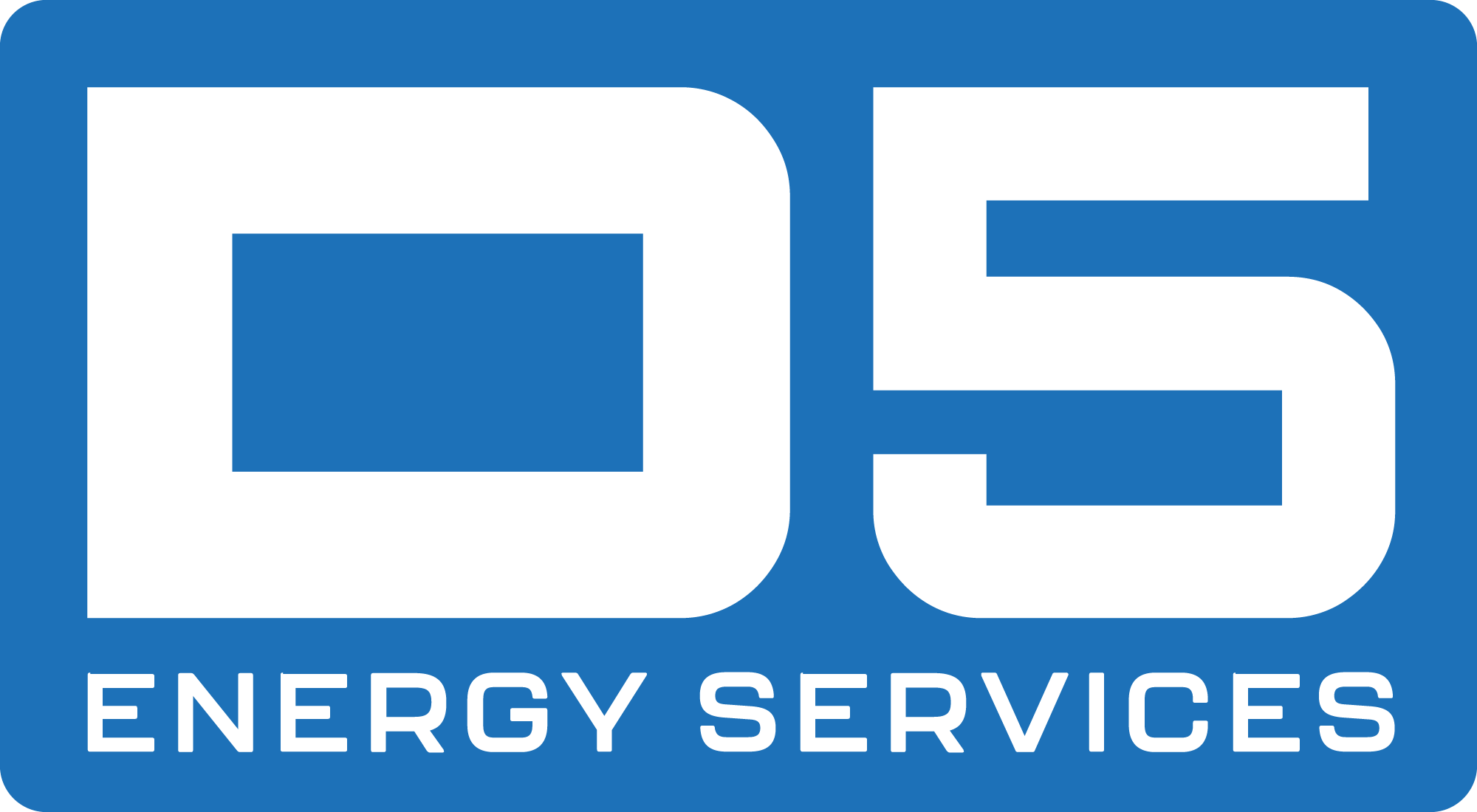Services for
Geothermal & Oil&Gas
Underbalanced & Managed Pressure Drilling
Underbalanced Drilling
In underbalanced drilling (UBD), the hydrostatic head of the drilling fluid is intentionally designed to be lower than the pressure of the formations that are being drilled. The hydrostatic head of the fluid may naturally be less than the formation pressure, or it can be induced by lightening the liquid phase of the drilling fluid using either natural gas, nitrogen or even air in some cases. Whether the underbalanced status is induced or natural, the result will likely be an influx of formation fluids (oil/gas/water) which must be circulated from the well and controlled at surface.
Because the fluid no longer acts as the primary well-control mechanism, the primary well control in UBD arises from three different mechanisms:
- Hydrostatic pressure (passive) of materials in the wellbore because of the density of the fluid used (mud) and the density contribution of any drilled cuttings.
- Friction pressure (dynamic) from fluid movement because of circulating friction of the fluid used.
- Choke pressure (confining or active), which arises because of the pipe being sealed at surface, resulting in a positive pressure at surface.
- The lower hydrostatic head avoids the buildup of filter cake on the formation as well as the invasion of mud and drilling solids into the formation. This helps to improve productivity of the well and reduce related drilling problems.
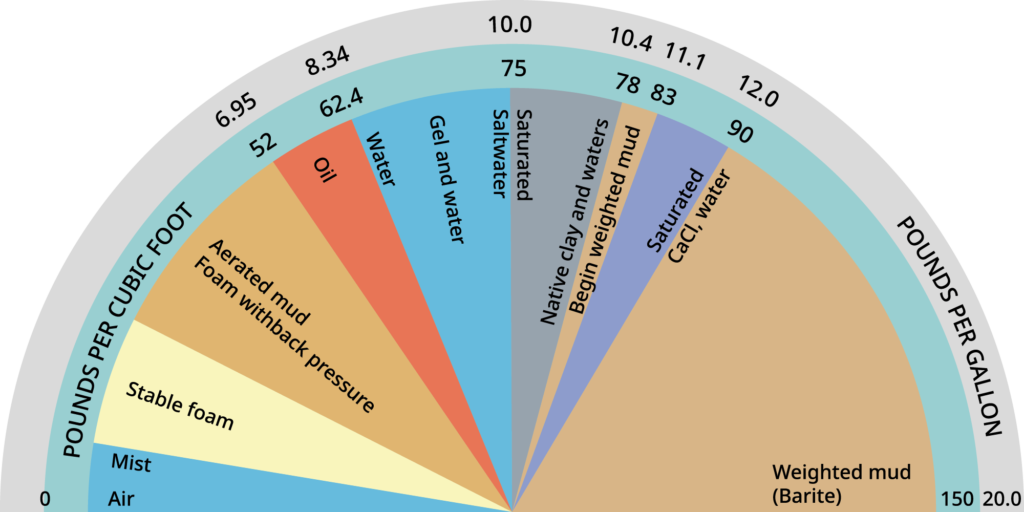
Minimize reservoir damage and increase production
D5 Energy Services underbalanced drilling (UBD) services achieve drilling and production objectives in challenging reservoirs. Drilling underbalanced requires both the right equipment and expertise.
Our advanced technology, products, and services, combined with real-time reservoir evaluation, focus on improving reservoir understanding and recovery while maximizing asset value.
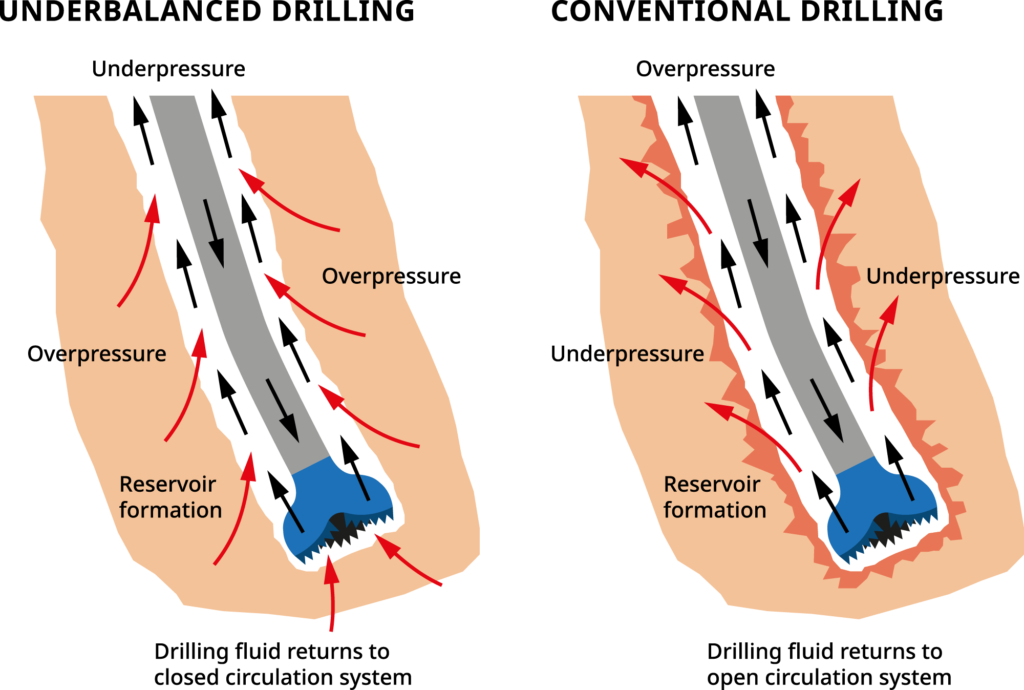
An engineered solution
The Managed Pressure/Underbalanced Drilling Engineer works with the customer to develop a detailed engineering and project management proposal, not limited to:
- Undertake multiphase flow modeling for the specific well programs.
- Determine the UBD strategy and the equipment requirements
- Conduct HAZID and Operational Planning sessions with the customer.
- Conduct a HAZOP session applicable to the UBD operations to be undertaken
- Update the submitted P & I.D. schematic and MPD/UBD equipment lease layout schematic
- Revise customer’s UBD Operational Procedures Manual specific to the program
- End of well reports, lessons learnt and program reviews and changes.
- MPD/UBD Training for rig crews
Managed Pressure Drilling
D5 Energy Services provides industry-leading managed pressure drilling services on an international scale. In Managed Pressure Drilling (MPD), the drilling fluid exerts a wellbore pressure that is controlled using surface back pressure. The well becomes a pressure vessel, sealed at the surface by a rotating control device and a choke manifold. MPD thus enables uninterrupted drilling through narrow pore-fracture pressure windows. Pressure control is maintained using a combination of fluid density, circulating friction, and surface pressure adjustments. MPD is a mature technology that can solve a wide range of problems, including differential sticking, unstable formations, wellbore ballooning, lost circulation, and loss-kick situations.
BHP = SP + HH + AFP
- BHP = Bottom Hole Pressure
- SP = Surface Pressure
- HH = Hydrostatic Pressure, due to mud weight
- AFP = Annular Friction Pressure, due to circulation
- ECD = HH + AFP
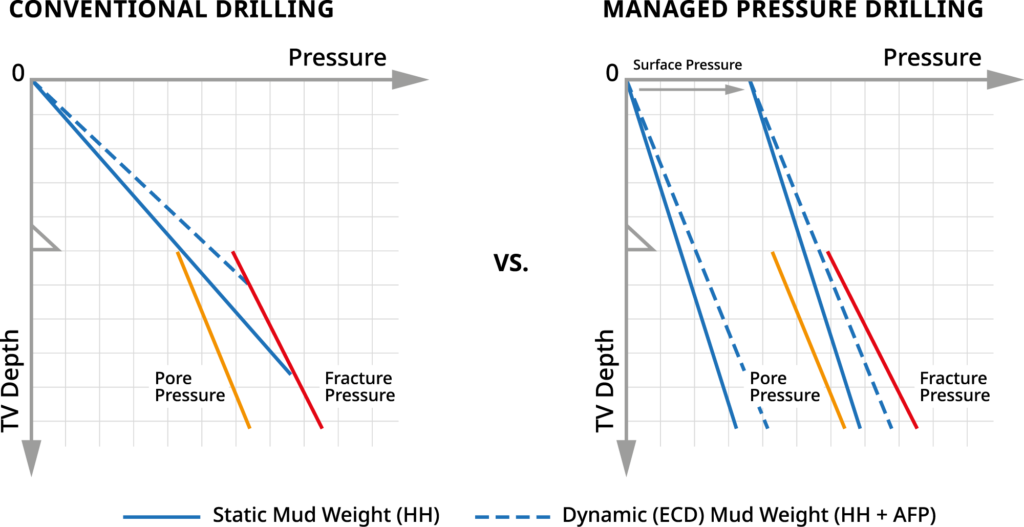
BHP = SP + HH + AFP
Constant Bottom-Hole Pressure (CBHP)
Constant Bottom-Hole Pressure (CBHP) is the methodology within MPD, whereby bottomhole pressure is kept constant at a specific depth, with the rig mud pumps on or off. [3] The CBHP method is commonly used in wells with highly uncertain and/or narrow drilling window, unstable formations were starting and stopping the pumps creates formation instability; HPHT wells.
Pressurized Mud-Cap Drilling (PMCD)
Pressurized Mud-Cap Drilling (PMCD) refers to drilling with no returns to surface where an annulus fluid column, assisted by surface pressure, is maintained above a formation that is capable of accepting fluid and cuttings. The well is controlled by using a Light Annular Mud (LAM) that has a slightly lower density than is required to balance the formation pressure and is maintained above an open-hole formation that is taking all injected sacrificial (SAC) fluid and drilled cuttings assisted by surface pressure. The LAM density is chosen based on ability to make LAM and the desired surface pressure that can be maintained and observed.
Dual Gradient (DG)
Dual Gradient (DG) is the drilling technology that uses or simulates the effect of two fluids of different gradients in the annulus to create dual hydrostatic gradients to better manage the annular pressure profile[5].It refers to offshore drilling operations, where mud returns do not travel through a conventional, large-diameter drilling riser. The returns are either dumped at the seafloor (pump and dump) or returned back to the rig, from the seafloor, through one or more small-diameter return lines. A seafloor or mud-lift pump takes returns from the well annulus at the seafloor and pumps it back to the surface. By adjusting the inlet pressure of the seafloor pump to near seawater hydrostatic pressure, a dual-pressure gradient is imposed on the wellbore annulus, much the same way riserless drilling imposes the seawater hydrostatic pressure in the annulus of the well.
- The MPD system is usually similar to that shown below and consists of the following key components:
- Rotating control device (RCD), used to seal around the drill pipe so that no pressure can escape toward the rig floor.
- MPD manifold, that uses a set of chokes with special actuators.
- Coriolis flow meter, used to accurately measure the return flow from the well.
- MPD control system, that uses a hydraulic model of the well coupled with choke and flow sensor data to control the MPD chokes.
- Optional mud gas separator, only as a contingency.
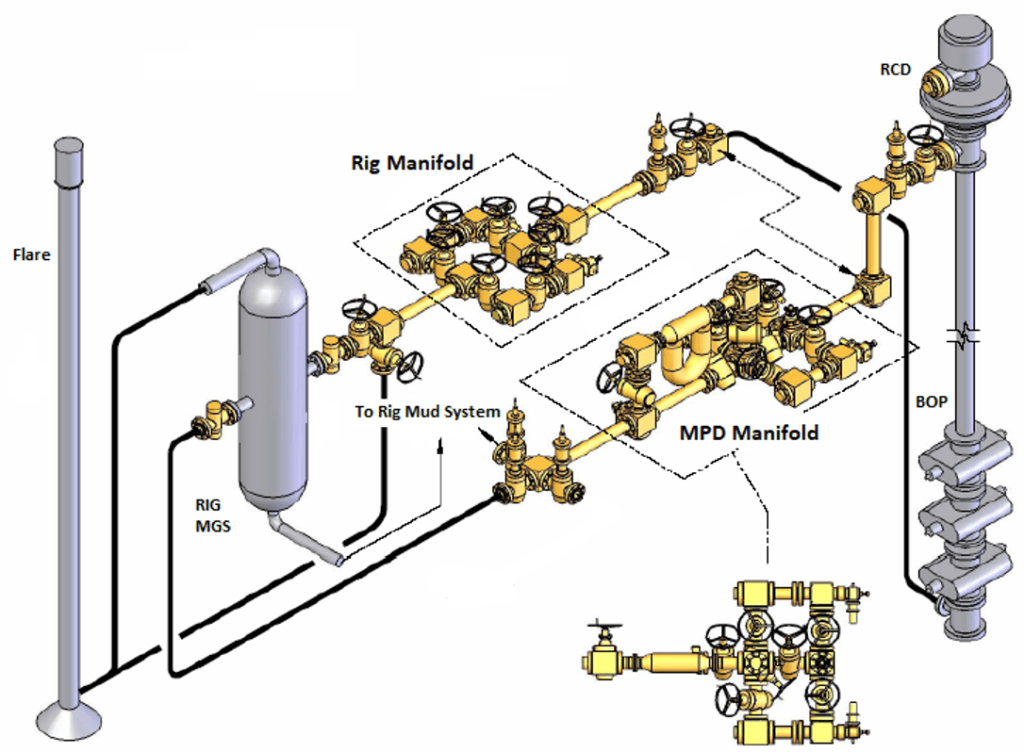
More information about MPD can be found from the following documents:
